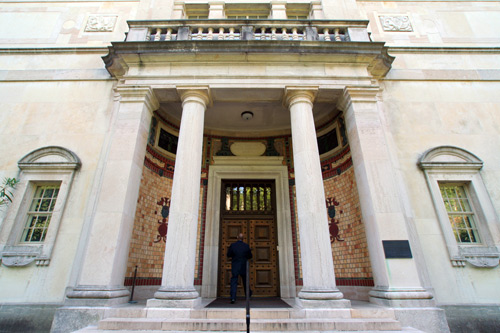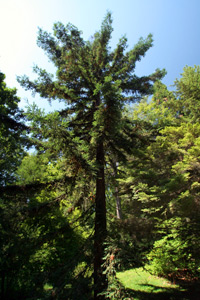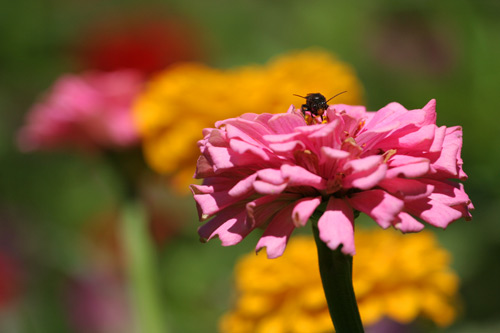17 August 08: The broad side of a Barnes
 Renoir, Cézanne, Matisse, Rousseau, Gauguin, Toulouse-Lautrec, van Gogh, Modigliani, Monet, Manet, El Greco, Seurat, Soutine, Picasso. These modern masters -- many of them French Impressionists, those who inspired them and those they inspired -- are linked together not by the marble walls of the Louvre or the Fifth Avenue confines of the Met, but by a seemingly endless collection of metal bric-a-brac in the seemingly endless galleries of a simple building on the Main Line . . . for now? The Barnes Foundation's seemingly endless attempt to relocate from North Natch's Lane in Merion to the site on the Ben Franklin Parkway currently occupied by the Youth Study Center (see the YSC story two posts below this one) continues to this day and into tomorrow, though now it feels closer than ever with the YSC relocating next semester. The multi-billion dollar art collection, meticulously arranged in ensembles envisioned by Dr Albert Barnes, was explicitly designated by Barnes' will to stay in Merion. In 2004, the Montgomery County Orphans Court, which oversees any changes to the Foundation's operating rules, approved breaking that will, permitting a move into Center City. Dr Barnes died tragically in a car accident in 1951, but it's safe to say that he lived a full life, arguably to a degree of heroism, having been an early outspoken advocate for racial and cultural diversity. After making a fortune on the antimicrobial medicine Argyrol (decades before the discovery of penicillin), Barnes in 1922 purchased a small arboretum owned by Civil War Captain Joseph Wilson, one block from City Line Avenue and modern day St Joseph's University. He commissioned Paul Cret (who had recently redesigned Rittenhouse Square and had a hand in the Parkway) to design a gallery building and Jacques Lipchitz to adorn it with his modernist sculpture. Barnes retained Wilson as the arboretum's director until his (Wilson's) death, and Barnes' wife Laura established a horticulture program to go along with the art education program that was the doctor's primary mission at the Foundation. The art and horticulture education programs carried on while public visitations were limited to two days a week until 1992, when Barnes' will was first broken: the art contained at the Foundation was not to leave the premises (i.e. to not tour), but with the building in need of serious repair, it did just that, touring the world with proceeds going to the repair. By the end of the same decade, the Foundation was near bankruptcy. The continued need for financial stability and sustainability brings us to today. Given the stringent rules surrounding the Foundation, namely the limit on visitors to its Merion location (co-opted by Lower Merion Township zoning restrictions), the current Foundation has effectively declared that it can only survive if it moves into Philadelphia, as the current method of fundraising is thwarted by its limited accessibility, both in numbers and in location. On the Parkway, it can accommodate a quarter of a million visitors a year -- over four times what it handles now -- and within walking distance of the Philadelphia Museum of Art, the Rodin Museum (also designed by Cret), the Franklin Institute and Academy of Natural Sciences. That is to say: in Center City, amongst the other institutions, it would have no trouble finally making money. The new space on the Parkway, currently in design by Tod Williams and Billie Tsien, would also accommodate classrooms, which currently do not exist at the Barnes. They're not supposed to -- the existing building galleries double as the classrooms for the Foundation's students, so that they may be taught from the artwork itself, not from a textbook.  If the Barnes' art collection moves to a new home on the Parkway, the building would, according to Foundation president Derek Gillman (NYT via barnesfoundation.org), become home to an 'archive for scholars'. The arboretum would remain on
the grounds, as would its horticulture program. (For as delicately as one can transport a massive Renoir, it's a little difficult to move a living, 150' redwood tree, as the one
pictured at right.)
If the Barnes' art collection moves to a new home on the Parkway, the building would, according to Foundation president Derek Gillman (NYT via barnesfoundation.org), become home to an 'archive for scholars'. The arboretum would remain on
the grounds, as would its horticulture program. (For as delicately as one can transport a massive Renoir, it's a little difficult to move a living, 150' redwood tree, as the one
pictured at right.)One has to wonder, though, if a scholarly archive and the arboretum would be enough to sustain a Barnes Foundation in Merion without the Barnes art collection. The 12 acre arboretum and garden -- home to over 2,000 species of plants including over 200 types of roses, as well as a fernery, herbarium, tea house, koi pond and greenhouse -- is stunningly beautiful. But it's even less visited than the art collection. Of the half dozen or so people I've recently spoken with who've actually been to the Barnes, only one of them has strolled the grounds of the arboretum. I'm a little embarrassed to say that it took me until Saturday to visit the Barnes Foundation. I'd never heard of it before moving to Philadelphia in 2000, and even since then it's been a pretty well-kept secret -- outside of the courtroom headlines, that is. You really have to be there to appreciate the place. I certainly do now . . . so much so that I'm also a little embarrassed that I've been so unquestionably pro-move. As a city resident, of course I want a world renowned art collection to be on the Parkway, making it a better place while at last replacing a poorly chosen adolescent prison. And I certainly trust that Olin Partnership, the landscape architect selected for the Parkway location, would be as sensitive as possible in honoring the green grounds of Merion. But if the move happens, it'll be easy to look at it as two halves of a greater whole. An established art collection will find itself in an all-new building on an all-new campus, while the established building on the established campus will find itself an all-new emptiness. There are merits to both sides of the argument, but the question is: whose merit is worth more? According to Montgomery County Orphans Court, the pro-move side -- the one endorsed by the Foundation itself and its financial supporters in the Pew, Lenfest and Annenberg Trusts -- has more merit. But even as we await the Williams-Tsien design unveiling, we can expect a continued fight against the move, from the Friends of the Barnes, the Foundation's alumni, art historians, critics and collectors, Merion and Montgomery County residents, and even some of the politicians representing them. In the meantime, the Barnes Foundation, on North Latch's Lane in Merion -- a short walk from the R5 -- remains off the beaten path, thanks to the vision of its founder. It truly is a reward to be there, as I was on Saturday. Visitors are understandably not allowed to take photos of the priceless paintings and other artworks inside the Cret building, but they're encouraged to do so in the arboretum and garden. My photos of those are, like other recent essays, assembled on a single page befitting our high-speed internet age. There are 42 photos, about 7M in size, so just give them a moment to load. They will pop open in a new window by clicking HERE. –B Love * * * NOTES & SOURCES: • Barnes Foundation • Friends of the Barnes • Barnes Foundation at the New York Times • The Independent (UK) • Barnes Foundation at Wikipedia * * * 
|
